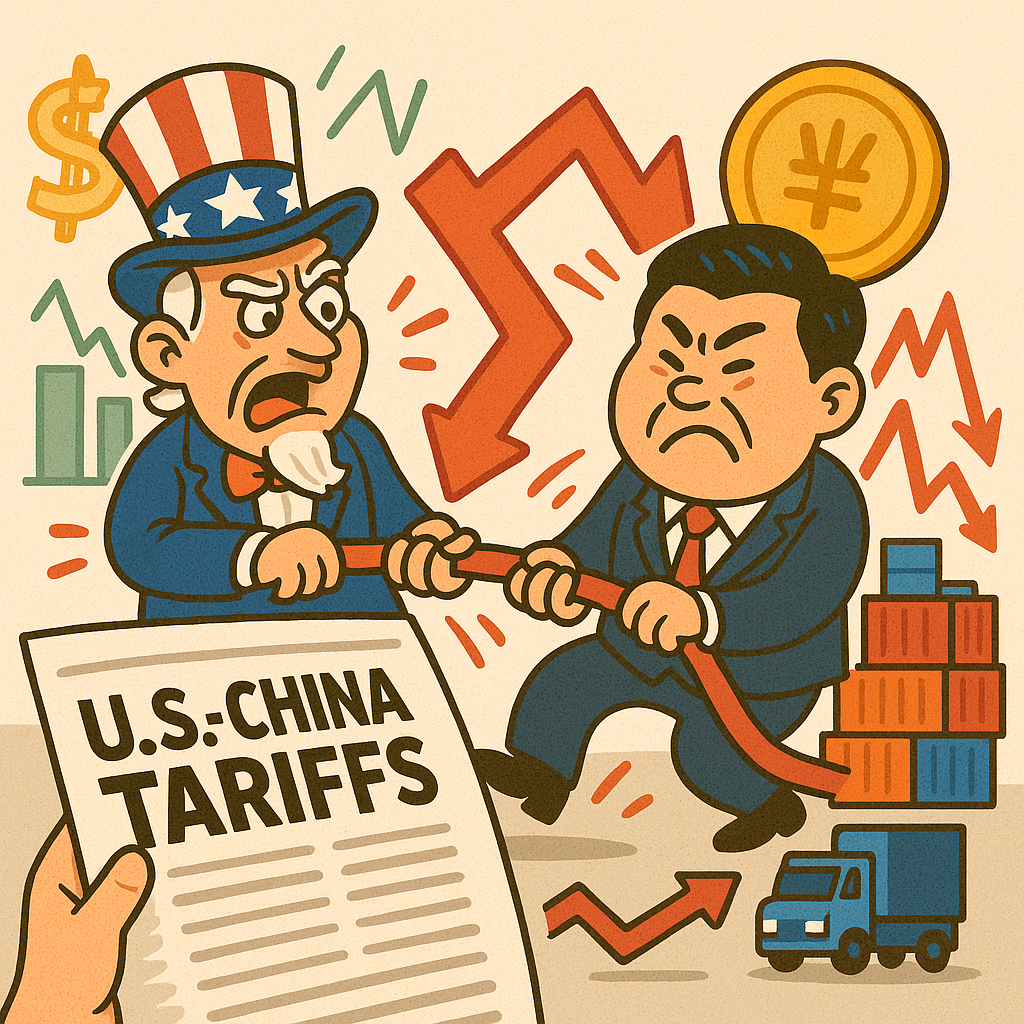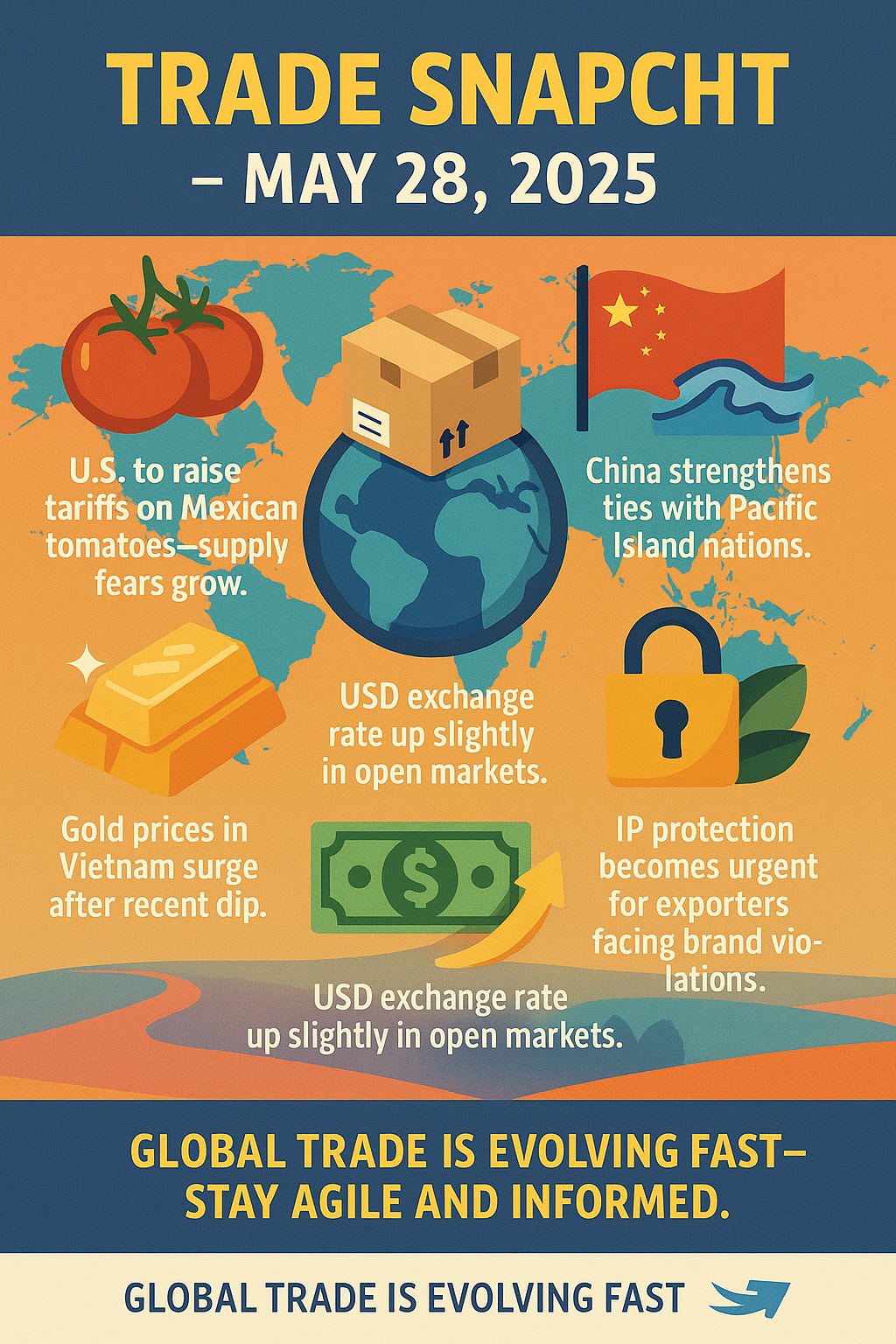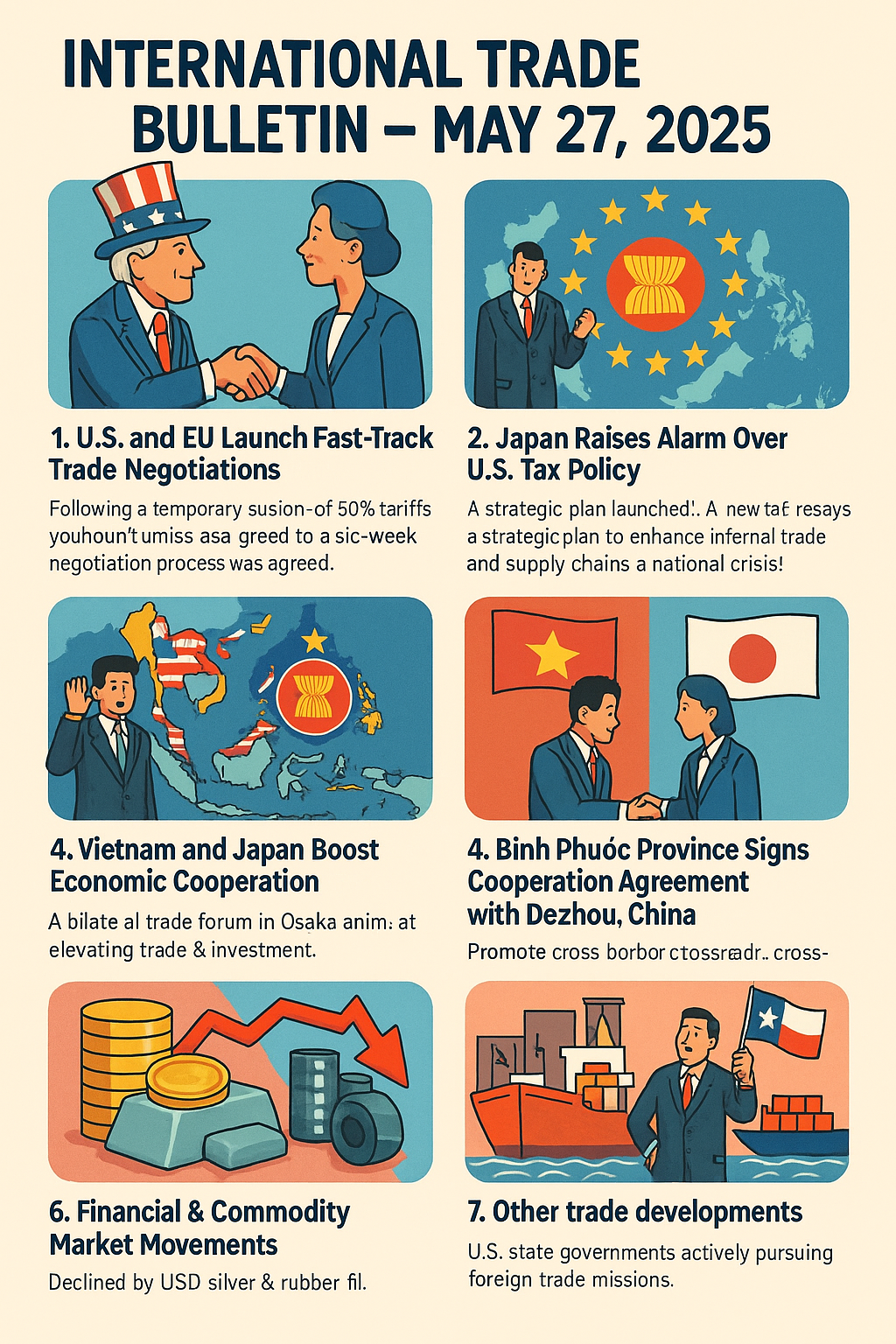International Trade Bulletin — May 8, 2025
Contents
International Trade Bulletin — May 8, 2025

1. U.S.–U.K. Bilateral Trade Deal
President Donald Trump and U.K. Prime Minister Keir Starmer officially announced a comprehensive trade agreement on May 8. Key measures include reducing U.S. tariffs on 100,000 U.K.-made vehicles from 27.5% to 10%, eliminating duties on steel and aluminum, and boosting U.S. beef and ethanol access to British markets.
2. India–U.K. Free Trade Roadmap
On May 6, India and the United Kingdom agreed on the framework of a free trade agreement after over three years of negotiations. The pact, set for formal signing within three months, will phase in tariff reductions on products ranging from automobiles to spirits, with the potential to increase bilateral trade by $34 billion annually by 2040.
3. European Companies in China Adapt
In response to the ongoing U.S.–China tariff war, European corporations operating in China report significant supply-chain adjustments and strategic pivots to manage costs and regulatory risks—highlighting the ripple effects of protectionist measures on global operations.
4. Diverging Monetary Policies
Global central banks are taking varied approaches to support their economies. The Federal Reserve faces upward inflationary pressure from U.S. tariffs, while the Bank of England and others are cutting interest rates to cushion growth amid mounting external risks.
5. E-Commerce Sector Sentiment
A Morningstar survey reveals that 81% of e-commerce executives are concerned about tariff-induced price pressures, yet 91% view international expansion as critical for future growth—demonstrating digital trade’s resilience in a challenging environment.




